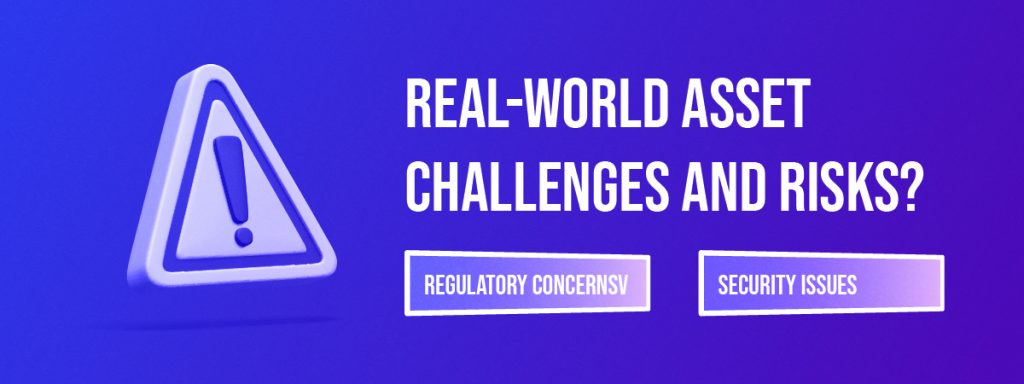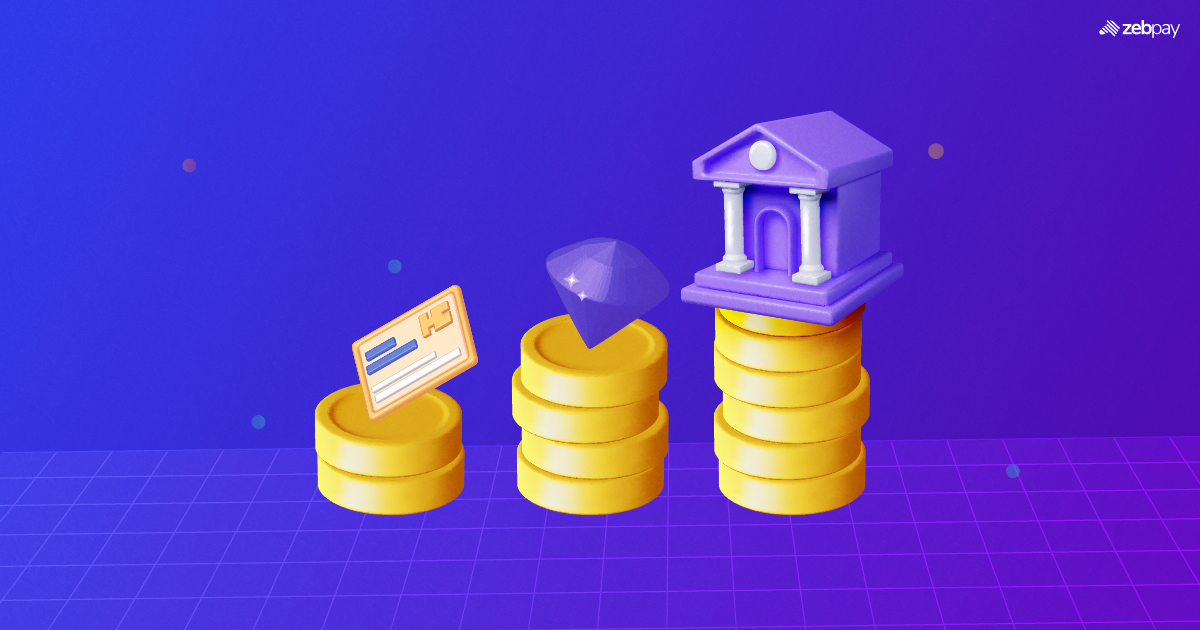Real-world assets (RWAs) use distributed ledger technology such as blockchain to monitor asset performance. These assets whether, tangible or intangible, can be tokenized and depicted as digital tokens on the blockchain. RWA tokens are essentially digital representations of assets not inherently native to a blockchain, distinguishing them from the typically volatile assets often linked to crypto. These tokens come with programmable features to incorporate elements such as lockup periods and specific criteria for accredited investors.
One way to categorize RWAs is by dividing tokenized assets into tangible and intangible categories. Tangible assets consist of physical matter, such as cars, fine art, or real estate properties, and they tend to be relatively illiquid. On the other hand, intangible assets are those not composed of physical matter, like government bonds, patents, or securities held by financial institutions. This blog will explore the integration of RWAs into crypto, their benefits and drawbacks, and some real-life examples to show the potential of this new investment tool.
Integration of Real-World Assets into Crypto
The tokenization process transforms real-world assets into digital tokens, facilitated by blockchain technology, enabling easy buying, selling, and trading on a blockchain platform. The initial stages involve identifying and valuing the real-world asset to be tokenized, encompassing a range from real estate and fine art to commodities or intellectual property. Subsequently, blockchain-based Smart contracts outline the procedures for creating, managing, and trading these tokens.
The automation of diverse processes and ensuring their execution according to agreed-upon terms relies on the implementation of smart contracts. The next stage involves choosing an appropriate blockchain platform for the tokenization process. For example, Ethereum may be opted for, given its support for smart contracts and robust developer community.
Benefits of Real-World Assets in Crypto
- Liquidity: Blockchain enables the fractionalization of traditionally difficult-to-access or illiquid assets, such as real estate, pre-IPO shares, and carbon credits. This feature paves the way for innovative ownership models and financial products. It provides access and liquidity to assets valued in the trillions of dollars.
- Global access market: Companies can access global markets without encountering the challenges associated with cross-border regulations and currency exchange problems that commonly affect international investments.
- Enhanced Security and Compliance: By placing assets on blockchain platforms, companies can take advantage of the robust security protocols inherent in the technology. Additionally, regulatory compliance can be embedded directly into the token, guaranteeing automatic conformity to local laws and regulations.
- Broadened Asset Base: Through the tokenization of real-world assets, businesses can expand their range of products. This accommodates a varied clientele and also fortifies the overall asset portfolio, providing resilience against market fluctuations.
What are the real-world asset challenges and risks?

- Regulatory Concerns: Navigating the complex and evolving regulatory landscape, which varies significantly across jurisdictions, poses a significant challenge and is a major worry. To mitigate potential legal issues that could jeopardize tokenized asset initiatives, it is vital to ensure compliance with securities laws and other relevant regulations.
- Security Issues: Safeguarding the financial or legal assets that underpin digital tokens is crucial. To prevent theft, fraud, or mishandling of these assets, choosing secure and dependable custody solutions is essential.
Real-World Examples
- Bonds: Utilizing RWA tokens for yield generation is possible through bond RWA tokens, supported by sovereign bonds. Tokenizing these bonds allows individuals to earn returns on their investments while also capitalizing on blockchain technology advantages such as transparency, liquidity, and fractional ownership.
- Real estate: Tokenizing real estate enables individuals to possess a portion of a property and receive rental income. This feature can democratize real estate investment, making it more accessible to a broader audience.
- Commodities: Tokenizing fine art enables individuals to own a portion of a painting or sculpture and generate income from it. This feature can increase accessibility to fine art investing for individuals who may not have the financial capacity to acquire an entire artwork.
Future Trends of RWA in Crypto
The tokenization of real-world assets is poised to undergo significant expansion and transformation in the future. Anticipated developments include a boost in investor confidence and greater participation from institutional entities as regulatory frameworks evolve to accommodate this emerging asset class. The integration of the Internet of Things, facilitating real-time asset monitoring and improved security measures, has the potential to enhance public trust in tokenized assets.
Furthermore, asset categories like intellectual property and carbon credits may experience increased tokenization, broadening the scope of investment opportunities in this dynamic landscape. Traditional financial institutions are enthusiastic about the prospect of tokenizing assets they already trade, such as gold, stocks, and commodities. The outlook for tokenization appears promising, with global business advisory firm Boston Consulting Group projecting that the market for tokenized assets could surge to $16 trillion by 2030.
Case Studies of Real World Assets (RWA) in Crypto
MakerDAO: MakerDAO has been actively incorporating real-world assets into its operations, and recent revelations indicate that approximately 80% of the fee revenue generated by MakerDAO is attributed to these assets. This robust cash flow is particularly advantageous for MakerDAO, considering that the protocol’s primary product is DAI, a decentralized, overcollateralized stablecoin.
In the past year, the founder of MakerDAO introduced the MakerDAO Endgame Plan, which involves the implementation of subDAOs to oversee different facets of the protocol. As part of the envisioned future, the Endgame anticipates increased scrutiny and regulation of real-world assets (RWAs).
Creditcoin (CTC): The Creditcoin protocol is designed to seamlessly integrate with fintech lenders in emerging markets and establish connections with DeFi investors. By recording the loan performance of borrowers on the blockchain, the protocol ensures trustless and transparent financial auditing for investors. The upcoming 3.0 upgrade of the protocol holds the promise of introducing EVM-compatible ‘universal smart contracts,’ allowing the connection of RWA investors across multiple chains.
The involvement of the four parties is as follows: Creditcoin serves as a credit history protocol for institutional auditing. Borrowers, representing fintech lenders in emerging markets seeking debt capital and investors, who are DeFi investors, are joining the Investor DAO to lend to borrowers. Gluwa, the developers of the protocol, propose borrowers to investors, conduct due diligence, and assist with the integration of Creditcoin.
Conclusion
Real-world assets (RWAs) are injecting energy into the asset landscape by bridging the gap between traditional and technological realms. The potential of RWAs is boundless, as virtually anything—from artwork, real estate, and carbon credits to financial instruments like bonds and stocks—can be tokenized.
Implementing RWAs comes with various challenges, such as valuation and auditing, custody and security, governance, trust, and concerns about interoperability and scalability. Overcoming these hurdles necessitates substantial collaboration among all stakeholders, including asset originators, token issuers, service providers, regulatory bodies, and traders.
If you found this blog to be useful, do share it with other like-minded crypto enthusiasts. Click on the button below to begin your crypto trading journey using ZebPay.

